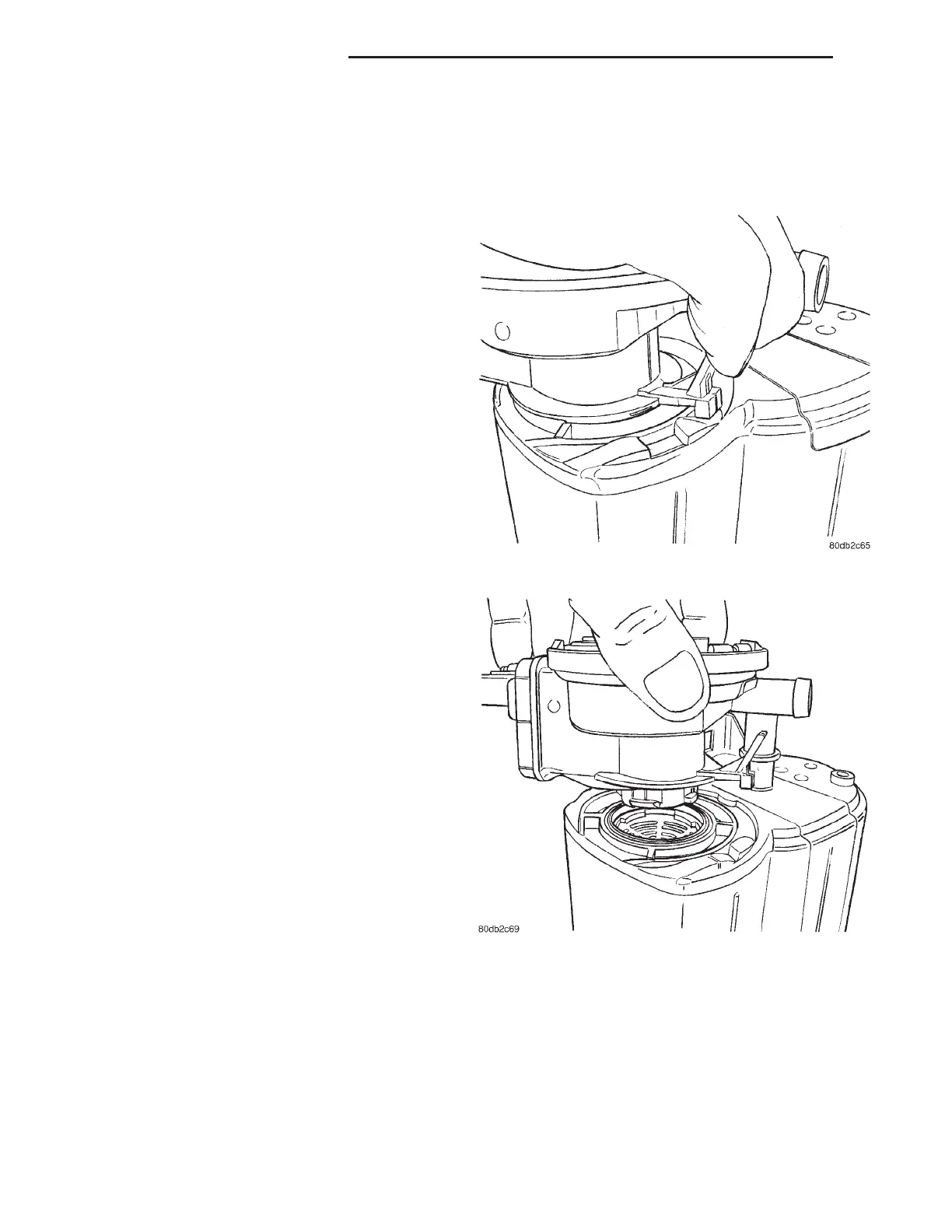The NVLD device is designed with a normally open
vacuum switch, a normally closed solenoid, and a
seal, which is actuated by both the solenoid and a
diaphragm. The NVLD is located on the atmospheric
vent side of the canister. The NVLD assembly may
be mounted on top of the canister outlet, or in-line
between the canister and atmospheric vent filter. The
normally open vacuum switch will close with about 19
H2O (0.25 KPA) vacuum in the evaporative system.
The diaphragm actuates the switch. This is above the
opening point of the fuel inlet check valve in the fill
tube so cap off leaks can be detected. Submerged fill
systems must have recirculation lines that do not
have the in-line normally closed check valve that pro-
tects the system from failed nozzle liquid ingestion,
in order to detect cap off conditions.
The normally closed valve in the NVLD is intended
to maintain the seal on the evaporative system dur-
ing the engine off condition. If vacuum in the evapo-
rative system exceeds 39 to 69 H2O (0.75 to 1.5 KPA),
the valve will be pulled off the seat, opening the seal.
This will protect the system from excessive vacuum
as well as allowing sufficient purge flow in the event
that the solenoid was to become inoperative.
The solenoid actuates the valve to unseal the can-
ister vent while the engine is running. It also will be
used to close the vent during the medium and large
leak tests and during the purge flow check. This sole-
noid requires initial 1.5 amps of current to pull the
valve open but after 100 ms. will be duty cycled down
to an average of about 150 mA for the remainder of
the drive cycle.
Another feature in the device is a diaphragm that
will open the seal in the NVLD with pressure in the
evaporative system. The device will 9blow off9 at
about 0.59 H2O (0.12 KPA) pressure to permit the
venting of vapors during refueling. An added benefit
to this is that it will also allow the tank to 9breathe9
during increasing temperatures, thus limiting the
pressure in the tank to this low level. This is benefi-
cial because the induced vacuum during a subse-
quent declining temperature will achieve the switch
closed (pass threshold) sooner than if the tank had to
decay from a built up pressure.
The device itself has 3 wires: Switch sense, sole-
noid driver and ground. It also includes a resistor to
protect the switch from a short to battery or a short
to ground. The NGC utilizes a high-side driver to
energize and duty-cycle the solenoid.
REMOVAL
(1) Disconnect the negative battery cable.
(2) Remove fuel tank, refer to the Fuel Delivery
section for Fuel Tank Removal.
(3) Disconnect the electrical connector from the
NVLD assembly.
(4) Disconnect the hoses from the NVLD assembly
(Fig. 5).
(5) Lift tab on NVLD assembly (Fig. 4) and twist
the assembly counterclockwise and pull up to remove
from EVAP canister (Fig. 5).
(6) Remove O-ring from EVAP canister (Fig. 6).
INSTALLATION
(1) Install O-ring to EVAP canister (Fig. 6).
(2) Install NVLD assembly (Fig. 4) and twist the
assembly clockwise to lock assembly in the EVAP
canister (Fig. 5).
(3) Connect the hoses to the NVLD assembly.
(4) Connect the electrical connector to the NVLD
assembly.
Fig. 4 LOCKING TAB
Fig. 5 ASSEMBLY REMOVED
25 - 14 EVAPORATIVE EMISSIONS LH
NATURAL VAC LEAK DETECTION ASSY (Continued)

